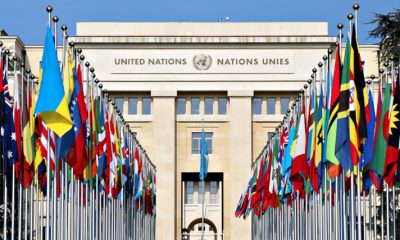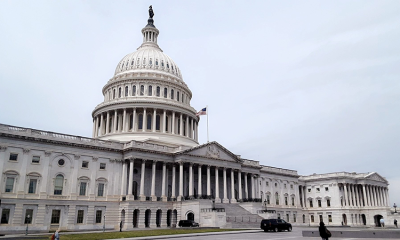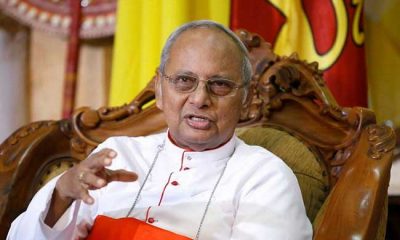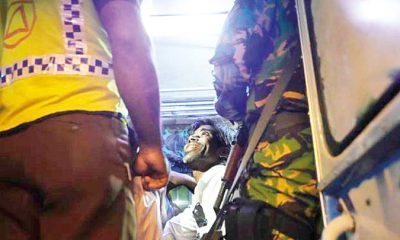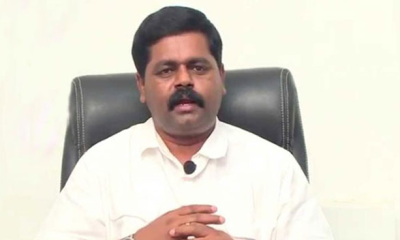Features
Prosecutorial Vs. Victim-based approaches to accountability
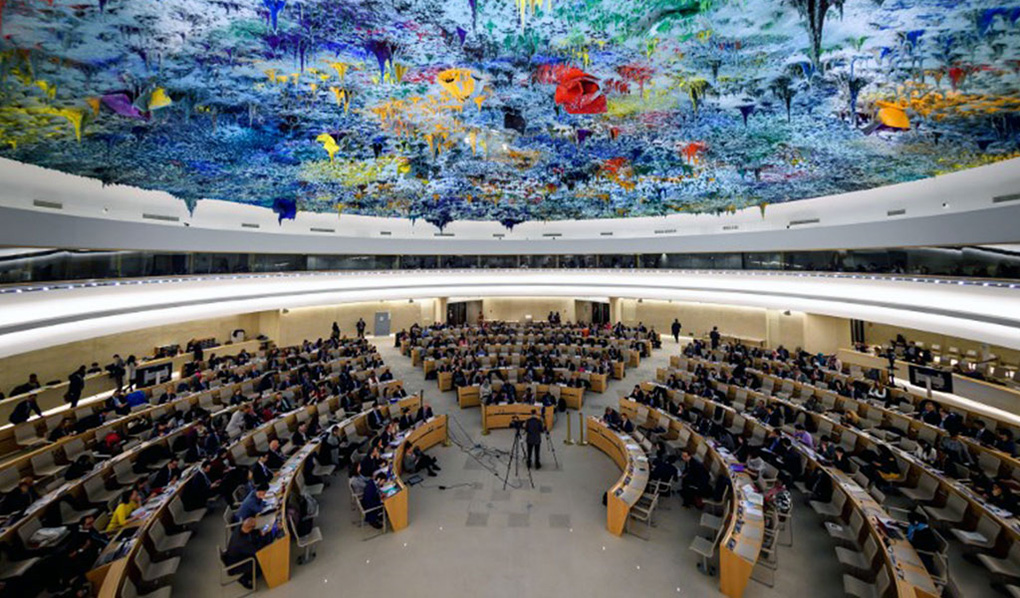
by Neville Ladduwahetty
A report in The Island (May 20, 2024) states that the UN human rights office has “criticised the Sri Lankan government’s failure to acknowledge and hold accountable the perpetrators of tens of thousands of enforced disappearances … Authors of the report also accuse the Liberation Tigers of Tamil Eelam of “engaging in abductions” which were described as “tantamount” to enforced disappearances” (May 20, 2024). Continuing, the report adds that the UN. The High Commissioner for Human Rights had stated: “Accountability must be addressed. We need to see institutional reform for reconciliation to succeed”.
In the meantime, the Secretary General of Amnesty International (AI) had “called for Sri Lanka to be referred to the UN Security Council and subjected to international war crimes inquiry when she participated to pay tribute to those who perished at Mullivaikkal. While the call for Sri Lanka to be referred to the Security Council may have pleased those who came to pay tribute, the reality is that such a referral would inevitably be vetoed. However, the fact remains that AI along with the UN Human Rights is advocating a prosecutorial approach to Accountability.
For instance, the Nuremberg Trial was strictly prosecutorial. In contrast, the Marshall Aid Plan was Victim based. While the objective of the former was to seek justice for the victims by prosecuting the perpetrators of the crimes, it was the latter that enabled Germany to recover and join the community of nations as a powerful and respected member.
The question that divides scholars and others who pursue accountability is; which approach to adopt. Should it be prosecutorial or victim based? While some, such as the UN report cited above advocate a prosecutorial approach for the sake of justice, others such as the High Commissioner are non-committal as to which approach to adopt. Yet, others want some aspects of both approaches. Therefore, the first question to be addressed is which approach to adopt, taking into account the particularities of the Sri Lankan society and the background that led to the armed conflict.
ESTABLISHING the CONTEXT
At a fundamental level, the raison d’etre for the armed conflict was the deep sense of grievance felt by the Tamil community; a circumstance they believed could only be overcome by resorting to an armed conflict to establish a separate state for themselves. For those representing the State of Sri Lanka, their bounden duty was to protect and preserve the territorial integrity of their cherished unitary state in keeping with Article 3 of Protocol II that state: “Nothing in the Protocol shall be invoked for the purpose of affecting the sovereignty of a State or the responsibility of the government by all legitimate means to maintain or re-establish law and order in the State or to defend the national unity and territorial integrity of the State”. The only means by which these vastly contending positions could be resolved was through an armed conflict; a fact recognized by the UN Human Rights Commission in paragraph 182 and 183 of their OISL report of 2015.
Pargraph 182 states: “Article 3 common to the four Geneva Conventions relating to conflicts not of an international character is applicable to the situation in Sri Lanka, with all parties to the conflict bound to respect the guarantees pertaining to the treatment of civilians ….”
Paragraph 183 states: “In addition, the government and armed groups that are parties to the conflict are bound alike by the relevant rules of customary international law applicable in non-international armed conflict”.
Therefore, if both the Sri Lankan State and the LTTE “are bound alike” by the relevant rules of customary international law applicable in non-international armed conflict”, why is all the attention to address accountability ONLY fixated on the Sri Lankan State and none on the LTTE. Since most of those who perished in Mullivaikkal were victims of the policy adopted by the LTTE to take civilians hostage, and continue to endanger the security of hundreds of thousands taken hostage by continuing to engage in hostilities, should NOT the LTTE also be held accountable? This being the case, would the evidence gathering that is currently being undertaken by the UNHRC in order to exercise Universal Jurisdiction, also apply to policies such as hostage taking and shooting escapees?
PROSECUTORIAL APPROACH
Judging from the attention given ONLY to the government of Sri Lanka by the UNHRC and by entities such as AI, the outcome of any judicial processes would be skewed, which means NO justice, despite the fact that the Sri Lankan Government and the LTTE “are bound alike” by relevant rules of customary international law as in common Article 3 and Protocol II; a fact confirmed below.
INTERNATIONAL COURT OF JUSTICE, Judgment of 27 June 1986,
(NICARAGUA v. UNITED STATES OF AMERICA), MERITS
Judgment – para. 215 to 292
“The conflict between the contras’ forces and those of the Government of Nicaragua is an armed conflict which is “not of an international character”. The acts of the contras towards the Nicaraguan Government are therefore governed by the law applicable to conflicts of that character; whereas the actions of the United States in and against Nicaragua fall under the legal rules relating to international conflicts. Because the minimum rules applicable to international and to non-international conflicts are identical, there is no need to address the question whether those actions must be looked at in the context of the rules which operate for the one or for the other category of conflict. The relevant principles are to be looked for in the provisions of Article 3 of each of the four Conventions of August 12, 1949, the text of which, identical in each Convention, expressly refers to conflict not having an international character” (ICJ Judgment, Nicaragua v. U.S para 215 – 292)
“In the Military and Paramilitary Activities in and against Nicaragua, the International Court of Justice observed that the acts of the Contras, fighting against the Nicaraguan Government, were governed by the law applicable to armed conflict not of an international character i.e. Common Article 3. Similarly, in the Tublada case, the Inter-American Commission considered”: Common Article 3’s mandatory provisions expressly bind and apply equally to both parties in internal conflicts, i.e. government and dissident forces. Moreover, the obligation to apply Common Article 3 is absolute for both parties and independent of the obligation of the other. Therefore, both the MTP attackers [the armed opposition group fighting in the conflict under consideration] and the Argentina armed forces had the same duties under humanitarian law” (Zegveld, Accountability of Armed Opposition Groups in International Law, p.21, ICJ Judgment Nicaragua v. US para 119 and Case No. 11/137).
Judging from the ICJ opinions cited above, it is certain that not only violations by the Sri Lanka Government but also violations perpetrated by the LTTE should be reviewed in the course of a Judicial Trial, since they are “bound alike”. Therefore, although violations by the Government forces and LTTE would be judged by Common Article 3, the fact remains that the leadership of the LTTE who ordered the taking of 300,000 plus civilians, hostage is not among the living or has disappeared, and cannot be subjected to a trial despite the fact that the act of taking civilians hostage amount to a war crime and a crime against humanity. Thus, the exercise of gathering evidence against Government perpetrators pales in significance compared with endangering the security of 300,000 plus civilians that were taken hostage. Despite this, a prosecutorial process would mean a skewed outcome of any trial because of the strong possibility that violations perpetrated by the Sri Lankan Government would dominate the trial.
Thus, while a few of those associated with the LTTE would have to face prosecution, the majority cannot be located or identified since they have acquired new identities and are domiciled in foreign countries. Also, others who were in positions to exercise command responsibility, but are no longer among the living cannot be prosecuted for the crimes committed, e.g. taking 300,000 civilians hostage and killing those who attempted to escape.
Under circumstances where it would be next to impossible to identify and prosecute former members of the LTTE because they are dispersed primarily in the West with fresh identities, a prosecutorial approach would lead to an asymmetric outcome resulting in the polarization of the two communities to a degree that could give cause for instability and even resumption of hostilities since the numbers associated with successive Governments who could be identified and prosecuted would significantly be more.
Furthermore, while it would be possible to identify those associated with the Government responsible for command, it is NOT possible to identify the leaders of the LTTE who were responsible because they are no longer among the living.
The net effect of such an asymmetric outcome following a prosecutorial process would permanently damage the efforts advocated and undertaken to bring about reconciliation.by successive Governments. For the UNHRC to include the provision in several of its Resolutions that “a credible justice process should include independent judicial and prosecutorial institutions….”, is because their perception is based on the premise that prosecuting the guilty would foster reconciliation.
While such a premise may be applicable to normal law and order situations, it is NOT applicable to Sri Lanka’s armed conflict that spanned three decades involving two communities if the prosecutorial process causes disproportionate outcomes as referred to above. Furthermore, if the outcome is such that more from the Sinhala majority community is prosecuted than from the minority Tamil community for whatever reason, the consequences would be to seriously setback the reconciliation processes; an outcome that defeats what the UNHRC hopes to achieve.
VICTIM BASED APPROACH
The real possibility of such serious outcomes, requires that the scope of the investigation is limited to such a degree that legal prosecution is not possible in the context of Sri Lanka. However, the scope of the investigation could be such that it is possible to establish the body of evidence associated with a particular incident There is strong evidence that the security forces targeted temporary hospitals despite being aware of their location. However, there is also counter evidence that the LTTE directed artillery fire from such locations and moved their ordinance soon after, thus tempting the security forces to target these make-shift hospitals. The investigation would then be limited to what each party to the conflict did in a given situation and not go beyond as to who was culpable to warrant prosecution under the relevant laws. Investigations would thus be a record of actions taken by respective parties to the conflict without delving further to establish which party was responsible for which violation of which laws, Human Rights or Humanitarian.
While this concept takes root, the leadership of both communities should jointly develop mechanisms to address the needs of victims and take joint responsibility for their implementation, instead of depending solely on the elected Government for Reconciliation to be effective and unity restored.
CONCLUSION
In light of the hard reality associated with prosecutorial processes cited above, and the ruling by the International Court of Justice in the case. Nicaragua v. U.S the “acts of the Contras fighting against the Nicaraguan Government were governed by the law applicable to armed conflict not of an international character i.e. Common Article 3…”. Therefore, the approach should be to limit investigations, not with the intent of prosecution because it would be skewed for reasons cited above. but with the intent of recording the events that occurred during the armed conflict, and which party to the armed conflict could be identified with the respective violations with a view to use this body of evidence to institute reforms to prevent recurrence.
It is indeed a matter of serious concern that successive Sri Lankan Governments have failed to acknowledge that the Sri Lankan Security Forces and the LTTE are bound alike by the laws applicable to the armed conflict in Sri Lanka. This has seriously dented addressing issues of accountability in a balanced manner.
At the end of such investigations the present leadership of the parties to the conflict should acknowledge the serious omissions and commissions committed by both parties and move on by declaring the broadest possible amnesty to all who were associated with the conflict as stated in Section 5 of Article 6 of the Additional protocol II of 1977.
Article 6 Section 5 States: “At the end of hostilities, the authorities in power shall endeavor to grant the broadest possible amnesty to persons who have participated in the armed conflict, or those deprived of their liberty for reasons related to the armed conflict, whether they are interned or detained”.
Since such amnesties and pardons have been instituted starting with the release of child soldiers and nearly 11,000 plus former LTTE combatants and more recently the release of prisoners, the practice has been in operation from time to time. This process would have gained momentum if not for the clamour for prosecutorial processes locally and resolutions of UNHRC that are tantamount to External intervention. The need therefore, is to regularize this practice and bring closure to an issue whose time has come.
Features
The heart-friendly health minister

by Dr Gotabhya Ranasinghe
Senior Consultant Cardiologist
National Hospital Sri Lanka
When we sought a meeting with Hon Dr. Ramesh Pathirana, Minister of Health, he graciously cleared his busy schedule to accommodate us. Renowned for his attentive listening and deep understanding, Minister Pathirana is dedicated to advancing the health sector. His openness and transparency exemplify the qualities of an exemplary politician and minister.
Dr. Palitha Mahipala, the current Health Secretary, demonstrates both commendable enthusiasm and unwavering support. This combination of attributes makes him a highly compatible colleague for the esteemed Minister of Health.
Our discussion centered on a project that has been in the works for the past 30 years, one that no other minister had managed to advance.
Minister Pathirana, however, recognized the project’s significance and its potential to revolutionize care for heart patients.
The project involves the construction of a state-of-the-art facility at the premises of the National Hospital Colombo. The project’s location within the premises of the National Hospital underscores its importance and relevance to the healthcare infrastructure of the nation.
This facility will include a cardiology building and a tertiary care center, equipped with the latest technology to handle and treat all types of heart-related conditions and surgeries.
Securing funding was a major milestone for this initiative. Minister Pathirana successfully obtained approval for a $40 billion loan from the Asian Development Bank. With the funding in place, the foundation stone is scheduled to be laid in September this year, and construction will begin in January 2025.
This project guarantees a consistent and uninterrupted supply of stents and related medications for heart patients. As a result, patients will have timely access to essential medical supplies during their treatment and recovery. By securing these critical resources, the project aims to enhance patient outcomes, minimize treatment delays, and maintain the highest standards of cardiac care.
Upon its fruition, this monumental building will serve as a beacon of hope and healing, symbolizing the unwavering dedication to improving patient outcomes and fostering a healthier society.We anticipate a future marked by significant progress and positive outcomes in Sri Lanka’s cardiovascular treatment landscape within the foreseeable timeframe.
Features
A LOVING TRIBUTE TO JESUIT FR. ALOYSIUS PIERIS ON HIS 90th BIRTHDAY

by Fr. Emmanuel Fernando, OMI
Jesuit Fr. Aloysius Pieris (affectionately called Fr. Aloy) celebrated his 90th birthday on April 9, 2024 and I, as the editor of our Oblate Journal, THE MISSIONARY OBLATE had gone to press by that time. Immediately I decided to publish an article, appreciating the untiring selfless services he continues to offer for inter-Faith dialogue, the renewal of the Catholic Church, his concern for the poor and the suffering Sri Lankan masses and to me, the present writer.
It was in 1988, when I was appointed Director of the Oblate Scholastics at Ampitiya by the then Oblate Provincial Fr. Anselm Silva, that I came to know Fr. Aloy more closely. Knowing well his expertise in matters spiritual, theological, Indological and pastoral, and with the collaborative spirit of my companion-formators, our Oblate Scholastics were sent to Tulana, the Research and Encounter Centre, Kelaniya, of which he is the Founder-Director, for ‘exposure-programmes’ on matters spiritual, biblical, theological and pastoral. Some of these dimensions according to my view and that of my companion-formators, were not available at the National Seminary, Ampitiya.
Ever since that time, our Oblate formators/ accompaniers at the Oblate Scholasticate, Ampitiya , have continued to send our Oblate Scholastics to Tulana Centre for deepening their insights and convictions regarding matters needed to serve the people in today’s context. Fr. Aloy also had tried very enthusiastically with the Oblate team headed by Frs. Oswald Firth and Clement Waidyasekara to begin a Theologate, directed by the Religious Congregations in Sri Lanka, for the contextual formation/ accompaniment of their members. It should very well be a desired goal of the Leaders / Provincials of the Religious Congregations.
Besides being a formator/accompanier at the Oblate Scholasticate, I was entrusted also with the task of editing and publishing our Oblate journal, ‘The Missionary Oblate’. To maintain the quality of the journal I continue to depend on Fr. Aloy for his thought-provoking and stimulating articles on Biblical Spirituality, Biblical Theology and Ecclesiology. I am very grateful to him for his generous assistance. Of late, his writings on renewal of the Church, initiated by Pope St. John XX111 and continued by Pope Francis through the Synodal path, published in our Oblate journal, enable our readers to focus their attention also on the needed renewal in the Catholic Church in Sri Lanka. Fr. Aloy appreciated very much the Synodal path adopted by the Jesuit Pope Francis for the renewal of the Church, rooted very much on prayerful discernment. In my Religious and presbyteral life, Fr.Aloy continues to be my spiritual animator / guide and ongoing formator / acccompanier.
Fr. Aloysius Pieris, BA Hons (Lond), LPh (SHC, India), STL (PFT, Naples), PhD (SLU/VC), ThD (Tilburg), D.Ltt (KU), has been one of the eminent Asian theologians well recognized internationally and one who has lectured and held visiting chairs in many universities both in the West and in the East. Many members of Religious Congregations from Asian countries have benefited from his lectures and guidance in the East Asian Pastoral Institute (EAPI) in Manila, Philippines. He had been a Theologian consulted by the Federation of Asian Bishops’ Conferences for many years. During his professorship at the Gregorian University in Rome, he was called to be a member of a special group of advisers on other religions consulted by Pope Paul VI.
Fr. Aloy is the author of more than 30 books and well over 500 Research Papers. Some of his books and articles have been translated and published in several countries. Among those books, one can find the following: 1) The Genesis of an Asian Theology of Liberation (An Autobiographical Excursus on the Art of Theologising in Asia, 2) An Asian Theology of Liberation, 3) Providential Timeliness of Vatican 11 (a long-overdue halt to a scandalous millennium, 4) Give Vatican 11 a chance, 5) Leadership in the Church, 6) Relishing our faith in working for justice (Themes for study and discussion), 7) A Message meant mainly, not exclusively for Jesuits (Background information necessary for helping Francis renew the Church), 8) Lent in Lanka (Reflections and Resolutions, 9) Love meets wisdom (A Christian Experience of Buddhism, 10) Fire and Water 11) God’s Reign for God’s poor, 12) Our Unhiddden Agenda (How we Jesuits work, pray and form our men). He is also the Editor of two journals, Vagdevi, Journal of Religious Reflection and Dialogue, New Series.
Fr. Aloy has a BA in Pali and Sanskrit from the University of London and a Ph.D in Buddhist Philosophy from the University of Sri Lankan, Vidyodaya Campus. On Nov. 23, 2019, he was awarded the prestigious honorary Doctorate of Literature (D.Litt) by the Chancellor of the University of Kelaniya, the Most Venerable Welamitiyawe Dharmakirthi Sri Kusala Dhamma Thera.
Fr. Aloy continues to be a promoter of Gospel values and virtues. Justice as a constitutive dimension of love and social concern for the downtrodden masses are very much noted in his life and work. He had very much appreciated the commitment of the late Fr. Joseph (Joe) Fernando, the National Director of the Social and Economic Centre (SEDEC) for the poor.
In Sri Lanka, a few religious Congregations – the Good Shepherd Sisters, the Christian Brothers, the Marist Brothers and the Oblates – have invited him to animate their members especially during their Provincial Congresses, Chapters and International Conferences. The mainline Christian Churches also have sought his advice and followed his seminars. I, for one, regret very much, that the Sri Lankan authorities of the Catholic Church –today’s Hierarchy—- have not sought Fr.
Aloy’s expertise for the renewal of the Catholic Church in Sri Lanka and thus have not benefited from the immense store of wisdom and insight that he can offer to our local Church while the Sri Lankan bishops who governed the Catholic church in the immediate aftermath of the Second Vatican Council (Edmund Fernando OMI, Anthony de Saram, Leo Nanayakkara OSB, Frank Marcus Fernando, Paul Perera,) visited him and consulted him on many matters. Among the Tamil Bishops, Bishop Rayappu Joseph was keeping close contact with him and Bishop J. Deogupillai hosted him and his team visiting him after the horrible Black July massacre of Tamils.
Features
A fairy tale, success or debacle

Sri Lanka-Singapore Free Trade Agreement
By Gomi Senadhira
senadhiragomi@gmail.com
“You might tell fairy tales, but the progress of a country cannot be achieved through such narratives. A country cannot be developed by making false promises. The country moved backward because of the electoral promises made by political parties throughout time. We have witnessed that the ultimate result of this is the country becoming bankrupt. Unfortunately, many segments of the population have not come to realize this yet.” – President Ranil Wickremesinghe, 2024 Budget speech
Any Sri Lankan would agree with the above words of President Wickremesinghe on the false promises our politicians and officials make and the fairy tales they narrate which bankrupted this country. So, to understand this, let’s look at one such fairy tale with lots of false promises; Ranil Wickremesinghe’s greatest achievement in the area of international trade and investment promotion during the Yahapalana period, Sri Lanka-Singapore Free Trade Agreement (SLSFTA).
It is appropriate and timely to do it now as Finance Minister Wickremesinghe has just presented to parliament a bill on the National Policy on Economic Transformation which includes the establishment of an Office for International Trade and the Sri Lanka Institute of Economics and International Trade.
Was SLSFTA a “Cleverly negotiated Free Trade Agreement” as stated by the (former) Minister of Development Strategies and International Trade Malik Samarawickrama during the Parliamentary Debate on the SLSFTA in July 2018, or a colossal blunder covered up with lies, false promises, and fairy tales? After SLSFTA was signed there were a number of fairy tales published on this agreement by the Ministry of Development Strategies and International, Institute of Policy Studies, and others.
However, for this article, I would like to limit my comments to the speech by Minister Samarawickrama during the Parliamentary Debate, and the two most important areas in the agreement which were covered up with lies, fairy tales, and false promises, namely: revenue loss for Sri Lanka and Investment from Singapore. On the other important area, “Waste products dumping” I do not want to comment here as I have written extensively on the issue.
1. The revenue loss
During the Parliamentary Debate in July 2018, Minister Samarawickrama stated “…. let me reiterate that this FTA with Singapore has been very cleverly negotiated by us…. The liberalisation programme under this FTA has been carefully designed to have the least impact on domestic industry and revenue collection. We have included all revenue sensitive items in the negative list of items which will not be subject to removal of tariff. Therefore, 97.8% revenue from Customs duty is protected. Our tariff liberalisation will take place over a period of 12-15 years! In fact, the revenue earned through tariffs on goods imported from Singapore last year was Rs. 35 billion.
The revenue loss for over the next 15 years due to the FTA is only Rs. 733 million– which when annualised, on average, is just Rs. 51 million. That is just 0.14% per year! So anyone who claims the Singapore FTA causes revenue loss to the Government cannot do basic arithmetic! Mr. Speaker, in conclusion, I call on my fellow members of this House – don’t mislead the public with baseless criticism that is not grounded in facts. Don’t look at petty politics and use these issues for your own political survival.”
I was surprised to read the minister’s speech because an article published in January 2018 in “The Straits Times“, based on information released by the Singaporean Negotiators stated, “…. With the FTA, tariff savings for Singapore exports are estimated to hit $10 million annually“.
As the annual tariff savings (that is the revenue loss for Sri Lanka) calculated by the Singaporean Negotiators, Singaporean $ 10 million (Sri Lankan rupees 1,200 million in 2018) was way above the rupees’ 733 million revenue loss for 15 years estimated by the Sri Lankan negotiators, it was clear to any observer that one of the parties to the agreement had not done the basic arithmetic!
Six years later, according to a report published by “The Morning” newspaper, speaking at the Committee on Public Finance (COPF) on 7th May 2024, Mr Samarawickrama’s chief trade negotiator K.J. Weerasinghehad had admitted “…. that forecasted revenue loss for the Government of Sri Lanka through the Singapore FTA is Rs. 450 million in 2023 and Rs. 1.3 billion in 2024.”
If these numbers are correct, as tariff liberalisation under the SLSFTA has just started, we will pass Rs 2 billion very soon. Then, the question is how Sri Lanka’s trade negotiators made such a colossal blunder. Didn’t they do their basic arithmetic? If they didn’t know how to do basic arithmetic they should have at least done their basic readings. For example, the headline of the article published in The Straits Times in January 2018 was “Singapore, Sri Lanka sign FTA, annual savings of $10m expected”.
Anyway, as Sri Lanka’s chief negotiator reiterated at the COPF meeting that “…. since 99% of the tariffs in Singapore have zero rates of duty, Sri Lanka has agreed on 80% tariff liberalisation over a period of 15 years while expecting Singapore investments to address the imbalance in trade,” let’s turn towards investment.
Investment from Singapore
In July 2018, speaking during the Parliamentary Debate on the FTA this is what Minister Malik Samarawickrama stated on investment from Singapore, “Already, thanks to this FTA, in just the past two-and-a-half months since the agreement came into effect we have received a proposal from Singapore for investment amounting to $ 14.8 billion in an oil refinery for export of petroleum products. In addition, we have proposals for a steel manufacturing plant for exports ($ 1 billion investment), flour milling plant ($ 50 million), sugar refinery ($ 200 million). This adds up to more than $ 16.05 billion in the pipeline on these projects alone.
And all of these projects will create thousands of more jobs for our people. In principle approval has already been granted by the BOI and the investors are awaiting the release of land the environmental approvals to commence the project.
I request the Opposition and those with vested interests to change their narrow-minded thinking and join us to develop our country. We must always look at what is best for the whole community, not just the few who may oppose. We owe it to our people to courageously take decisions that will change their lives for the better.”
According to the media report I quoted earlier, speaking at the Committee on Public Finance (COPF) Chief Negotiator Weerasinghe has admitted that Sri Lanka was not happy with overall Singapore investments that have come in the past few years in return for the trade liberalisation under the Singapore-Sri Lanka Free Trade Agreement. He has added that between 2021 and 2023 the total investment from Singapore had been around $162 million!
What happened to those projects worth $16 billion negotiated, thanks to the SLSFTA, in just the two-and-a-half months after the agreement came into effect and approved by the BOI? I do not know about the steel manufacturing plant for exports ($ 1 billion investment), flour milling plant ($ 50 million) and sugar refinery ($ 200 million).
However, story of the multibillion-dollar investment in the Petroleum Refinery unfolded in a manner that would qualify it as the best fairy tale with false promises presented by our politicians and the officials, prior to 2019 elections.
Though many Sri Lankans got to know, through the media which repeatedly highlighted a plethora of issues surrounding the project and the questionable credentials of the Singaporean investor, the construction work on the Mirrijiwela Oil Refinery along with the cement factory began on the24th of March 2019 with a bang and Minister Ranil Wickremesinghe and his ministers along with the foreign and local dignitaries laid the foundation stones.
That was few months before the 2019 Presidential elections. Inaugurating the construction work Prime Minister Ranil Wickremesinghe said the projects will create thousands of job opportunities in the area and surrounding districts.
The oil refinery, which was to be built over 200 acres of land, with the capacity to refine 200,000 barrels of crude oil per day, was to generate US$7 billion of exports and create 1,500 direct and 3,000 indirect jobs. The construction of the refinery was to be completed in 44 months. Four years later, in August 2023 the Cabinet of Ministers approved the proposal presented by President Ranil Wickremesinghe to cancel the agreement with the investors of the refinery as the project has not been implemented! Can they explain to the country how much money was wasted to produce that fairy tale?
It is obvious that the President, ministers, and officials had made huge blunders and had deliberately misled the public and the parliament on the revenue loss and potential investment from SLSFTA with fairy tales and false promises.
As the president himself said, a country cannot be developed by making false promises or with fairy tales and these false promises and fairy tales had bankrupted the country. “Unfortunately, many segments of the population have not come to realize this yet”.
(The writer, a specialist and an activist on trade and development issues . )


